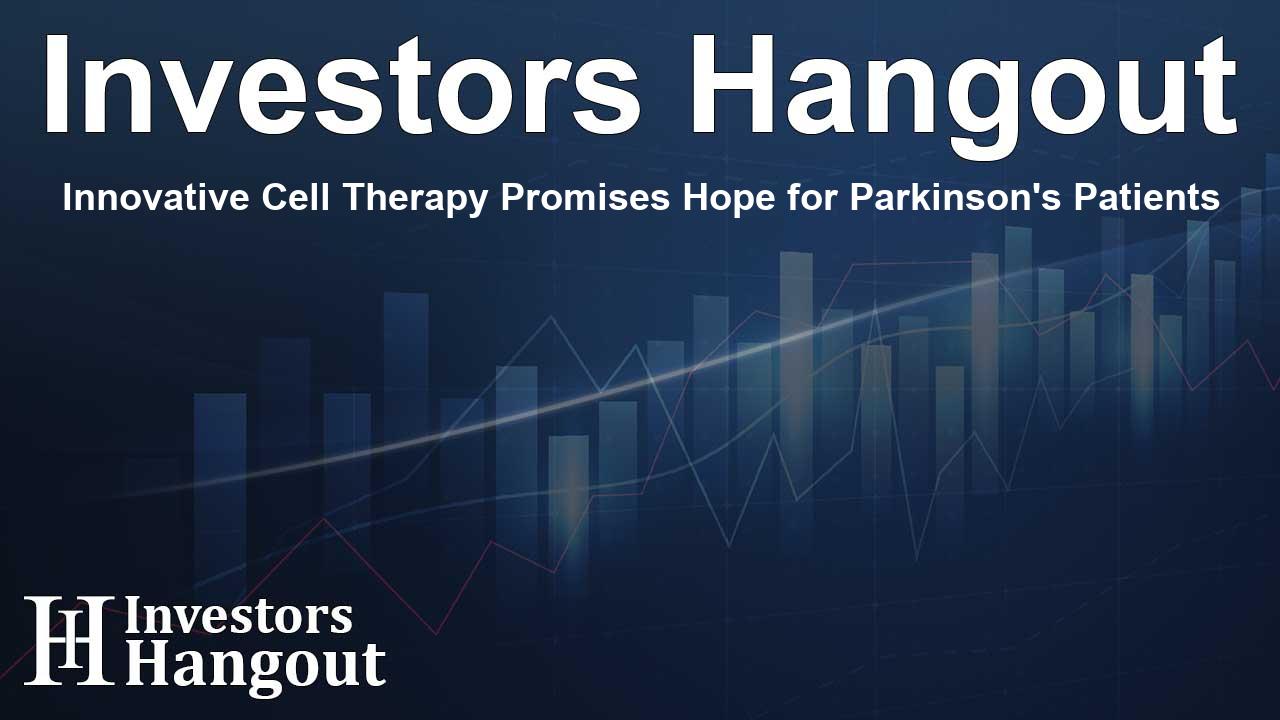Innovative Cell Therapy Promises Hope for Parkinson's Patients

New Developments in Cell Therapy for Parkinson's Disease
Recent studies have begun to illustrate the promising landscape of cell therapy for individuals grappling with Parkinson's disease (PD). Researchers gathered at an esteemed international conference to share their findings, which signal a potential breakthrough in treating this challenging condition. The exploration of dopaminergic cell transplantation has unveiled encouraging signs of safety and efficacy, prompting new discussions about its application in clinical settings.
Understanding Parkinson's Disease and Its Treatment
Parkinson's disease is characterized by the gradual loss of dopaminergic neurons, particularly those in the substantia nigra, which plays a critical role in controlling movement. This loss leads to a range of symptoms that can severely affect quality of life. Traditional treatments, though helpful, often diminish in effectiveness over time, leading researchers to pursue innovative therapies, including cell replacement methodologies.
Insights from Recent Studies
Two significant studies explored the effectiveness of different dopaminergic stem cell lines in patients diagnosed with PD. Participants received either a high or low dose of stem cells injected into the putamen area of the brain. Notably, those in the high-dose group experienced substantial improvements in their motor functions, while others maintained stable conditions with no serious adverse effects reported.
The Role of Stem Cells in Therapy
Historically, fetal tissue transplantation has been suggested as a possible treatment for PD. However, constraints around the availability of suitable tissue and potential side effects have necessitated the search for alternative sources of dopaminergic neurons. Recent studies led by distinguished experts emphasize that human embryonic stem cell-derived dopamine neurons may possess the functional properties needed to advance cell-based therapy for PD.
Key Findings from Clinical Trials
Dive deeper into the studies presented, and we find the work by researchers examining a product known as Bemdaneprocel, which derived from human embryonic stem cells. The results indicate that this treatment is overall safe and has shown promising improvements in patient-reported outcomes such as off times and motor symptoms as measured by the MDS-UPDRS Part III scale. Another trial introduced A9-DPC, another creation from human embryonic stem cells. This initiative has demonstrated increased uptake of imaging markers post-transplant, affirming the safety and efficacy of the approach.
The Future of Parkinson's Disease Treatment
The insights gained from these studies represent a significant step forward in the realm of cell therapy for Parkinson's disease. The preliminary efficacy observed instills hope for larger clinical trials, paving the way towards more advanced treatment options. Researchers are excited about the possibility that these findings could lead to a more robust understanding of PD and potentially revolutionize the care provided to patients.
A Community of Researchers and Clinicians
The collaborative effort among clinicians, scientists, and health professionals showcased at the recent congress is key to advancing the understanding and treatment of movement disorders, including Parkinson's disease. As the field continues to evolve, the importance of infrastructure that supports research and development in this area cannot be overstated.
Conclusion
In closing, the exploration of cell therapy in Parkinson's disease shines a light on new possibilities that may enhance the quality of life for many individuals. As researchers delve deeper into the potential of stem cell therapies, they inch closer to unveiling solutions that could transform treatment protocols. With the ongoing dedication of the scientific community, brighter days may lie ahead for those affected by PD.
Frequently Asked Questions
1. What is the significance of recent studies in cell therapy for PD?
The studies highlight promising safety and efficacy outcomes, indicating that cell therapy could become a viable treatment option for Parkinson's disease.
2. How does Parkinson's disease affect the brain?
Parkinson's disease primarily affects the substantia nigra, leading to a loss of dopaminergic neurons, which are crucial for controlling movement.
3. What are the main findings from the clinical trials discussed?
The trials showed that high doses of dopaminergic stem cells improved motor function without serious side effects, demonstrating the therapy's promise.
4. Why is there a need for new treatment options for PD?
Current treatments often become less effective over time, highlighting the need for innovative therapies that can better manage PD symptoms.
5. What role do stem cells play in PD therapy?
Stem cells offer a potential source of replacement dopamine neurons, which might alleviate the symptoms associated with the loss of these cells in Parkinson's disease.
About The Author
Contact Addison Perry privately here. Or send an email with ATTN: Addison Perry as the subject to contact@investorshangout.com.
About Investors Hangout
Investors Hangout is a leading online stock forum for financial discussion and learning, offering a wide range of free tools and resources. It draws in traders of all levels, who exchange market knowledge, investigate trading tactics, and keep an eye on industry developments in real time. Featuring financial articles, stock message boards, quotes, charts, company profiles, and live news updates. Through cooperative learning and a wealth of informational resources, it helps users from novices creating their first portfolios to experts honing their techniques. Join Investors Hangout today: https://investorshangout.com/
The content of this article is based on factual, publicly available information and does not represent legal, financial, or investment advice. Investors Hangout does not offer financial advice, and the author is not a licensed financial advisor. Consult a qualified advisor before making any financial or investment decisions based on this article. This article should not be considered advice to purchase, sell, or hold any securities or other investments. If any of the material provided here is inaccurate, please contact us for corrections.
